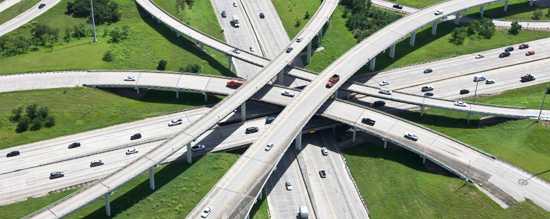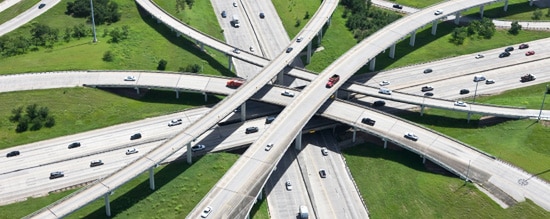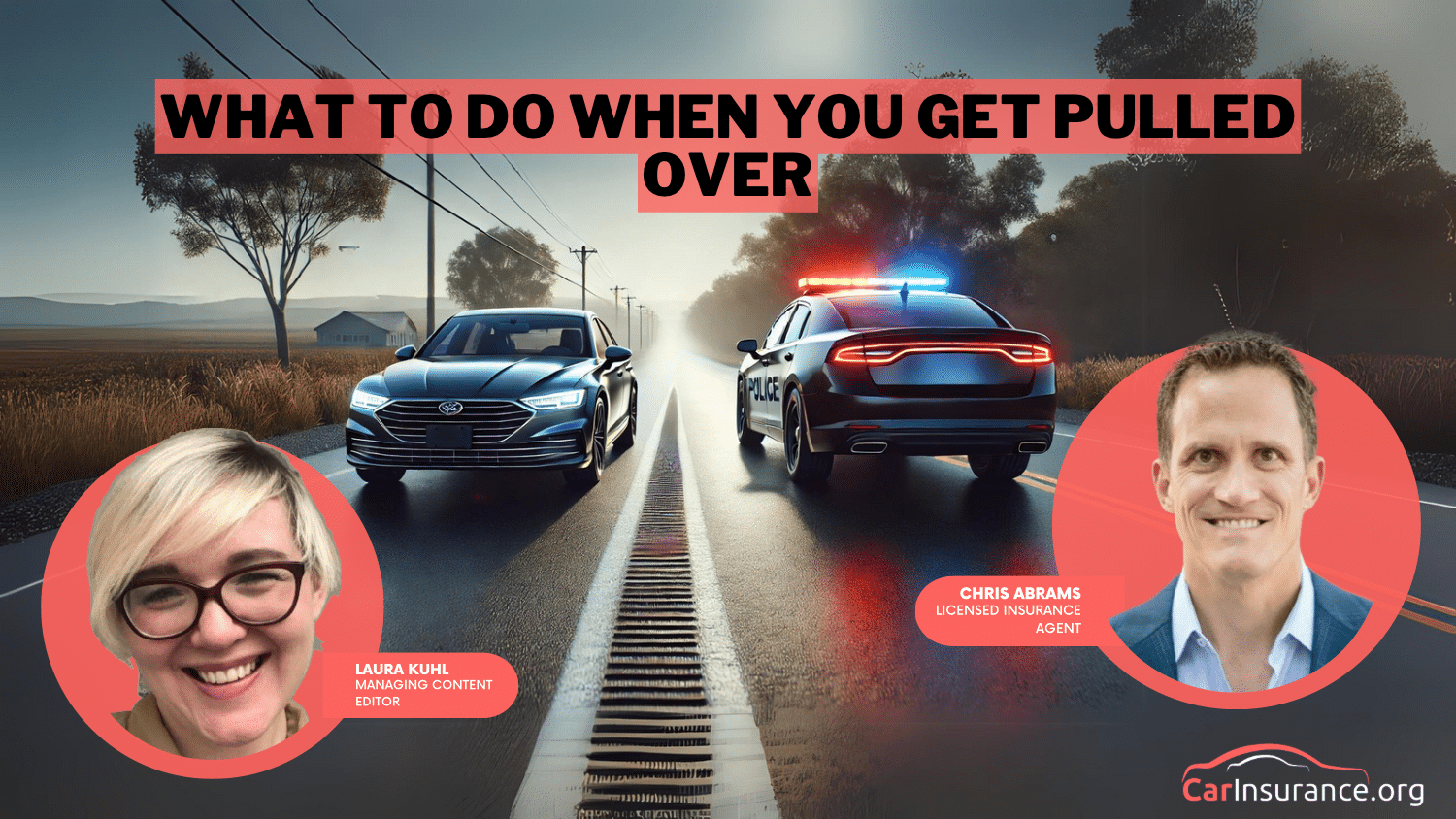15 Startling Facts About America’s Infrastructure
These 15 startling facts about America's infrastructure may surprise you. While Americans enjoy a better infrastructure than many places in the world, the reality is that it is outdated, inefficient, and in many places around the nation currently crumbling to pieces. If you had any doubts about the sad state of the American infrastructure, read on to learn just how bad things really are.
Read more Secured with SHA-256 Encryption




Table of Contents
Table of Contents


Insurance Feature Writer
Rachel Bodine graduated from college with a BA in English. She has since worked as a Feature Writer in the insurance industry and gained a deep knowledge of state and countrywide insurance laws and rates. Her research and writing focus on helping readers understand their insurance coverage and how to find savings. Her expert advice on insurance has been featured on sites like PhotoEnforced, All...
Rachel Bodine


Licensed Insurance Agent
Michelle Robbins has been a licensed insurance agent for over 13 years. Her career began in the real estate industry, supporting local realtors with Title Insurance. After several years, Michelle shifted to real estate home warranty insurance, where she managed a territory of over 100 miles of real estate professionals. Later, Agent Robbins obtained more licensing and experience serving families a...
Michelle Robbins
Updated August 2024
The infrastructure of a nation is what holds civilization together. It includes roads, water supplies, sewers, electrical grids, and telecommunications — things without which the world might prove a difficult place to navigate. While Americans enjoy a better infrastructure than many places in the world, the reality is that it is outdated, inefficient, and in many places around the nation crumbling.

Sadly, things are only going to get worse before they get better, as roads fill with potholes, bridges collapse, and electrical grids brown out with more regularly, all unable to provide for the needs of the populace.
Many local officials patch current holes and other road issues with cheap solutions that lead to future infrastructure issues within short periods. If you had any doubts about the sad state of the American infrastructure, read on to learn just how bad things really are.
More Than 25% of U.S. Bridges Need Significant Repairs
This includes a whopping 150,000 bridges that aren’t up to snuff. In recent years, bridge and overpass collapses have even led to deaths. One of the most notable of these was the I-35 bridge in Minneapolis, which collapsed in 2007, killing 13 and injuring 145. If bridges are not updated or repaired, these kinds of accidents could become more common.
Free Insurance Comparison
Compare Quotes From Top Companies and Save
Secured with SHA-256 Encryption
The Impact of Overburdened Power Grids
In a world that relies heavily on technology for everything from health care to business, losing power can be a big deal. In the past decade, huge blackouts have left much of the Northeast and Florida without power for several days. This costs money, time, and can create unsafe conditions for residents.
In some cases, it has caused deaths, not just loss of economic activity, especially in vulnerable elderly communities. The loss of air conditioning during a heat wave alone can be extremely dangerous in cities across Florida, Puerto Rico, and other parts of North America with traditionally hot climates.
Over 4,095 dams in the U.S. are considered “unsafe,” meaning they have deficiencies that leave them more susceptible to failure, especially during flooding or earthquakes. The number of dams in the United States that could fail has grown 134% since 1999, and now comprises 3,346 dams nationwide. More than 1,300 of these dangerous dams are considered “high hazard” because their collapse could threaten the lives of those living nearby.
More than a third of all dam failures or near-failures since 1874 have happened in just the last decade.
The rate of failures is increasing at a disturbingly fast rate, as America’s dams age and deteriorate. Can’t remember any recent dam failures? In 2004, 30 different dams in New Jersey’s Burlington County failed or were damaged after a period of, particularly heavy rainfall.
33% of Traffic Deaths Related to Dangerous Roads
The Federal Highway Administration estimates that poor road conditions play a role in more than 14,300 traffic fatalities each year
Highway Usage Increasing by 160 Hours of Traffic a Year
If you think traffic is bad now, just wait a few years. Over the next quarter-century, experts estimate that traffic on American roads is going to be much, much worse. Commuting between work and home could be a nightmare for many, taking up nearly a week of time over the course of the year.
Also, keep in mind that this number is just an average. In high-traffic urban areas, the estimates are much higher. As highway usage rises, toll roads and bridges will continue to increase as well.
Free Insurance Comparison
Compare Quotes From Top Companies and Save
Secured with SHA-256 Encryption
Overburdened Interstate Roads Impacting Drivers
According to some reports, more than half of America’s interstate miles are at 70% of traffic capacity, and nearly 25% of the miles are strained at more than 95% capacity. Americans love their cars, and the roads are clogged with drivers as a result.
Much of the interstate system in the U.S. is struggling to keep up with the number of people who use it each day, leading to traffic jams and accidents at much higher rates.

Whether you’re in a large city like Washington, D.C. or San Francisco or a rural part of South Dakota, traffic is picking up and causing serious delays. Poor road conditions just make these delays worse.
Over 33% of America’s Major Roads in Subpar Condition
If you hadn’t already noticed that the streets in your city were littered with potholes and cracks, this stat will let you in on the secret: American roads are falling apart.
With many states teetering on the edge of bankruptcy and unable to keep up with maintenance, this situation isn’t likely to change soon.
What the U.S. Must Spend to Repair Roadways
The United States must invest $225 billion per year over the next 50 years to maintain and adequately enhance roads and other transportation systems to meet demand. Currently, the U.S. is spending less than 40% of this amount, which will make it impossible to effectively keep up with and expand the transit system.
Since 2005, U.S. infrastructure has held a D rating from the American Society of Civil Engineers. It’s no joke that the infrastructure of the U.S. is getting worse and worse. In some areas, quality of water, electricity, and roads have been compared to those of a developing nation.
Major changes need to be made to keep up, modernize, and allow America to remain competitive in the world market. While the COVID-19 pandemic did not cause these infrastructure issues, it has aggravated the effects.
By 2020, every major U.S. container port is projected to be handling at least double the volume it was designed for.
Imports and exports are major, major business for the U.S., and in the future, this isn’t likely to change. Yet the ports we use to do our trading are going to be seriously overloaded and will need a major overhaul to adequately deal with the number of ships coming in and out.
Free Insurance Comparison
Compare Quotes From Top Companies and Save
Secured with SHA-256 Encryption
Airline Delay Costs Expected to Triple to $30 Billion
Sitting on the tarmac waiting to take off or deplane isn’t just annoying it’s costing businesses billions of dollars each year. The amount of time lost or wasted on flights is continually rising, up to 170 total years (15 minutes lost on 1.6 million flights) in 2007 from just 70 years lost in 2003.
Railroads Require a $200 Billion Investment
Railroads are a viable, if not quick, means of transporting people and goods the world over but in the U.S., many lines are painfully inefficient and falling apart. While money is being poured into modernizing train systems (most notably high speed rail on some Amtrak lines), much more will be needed to keep pace with the amount of rail traffic in coming years.
Not to mention everything it will take to make rail travel an appealing option to notoriously phobic Americans.
The Future of American Infrastructure
As the state of U.S. infrastructure continues to deteriorate, it’s crucial to consider what the future holds. While many facts about infrastructure paint a bleak picture of America’s crumbling infrastructure, understanding these trends can help us prepare for the challenges ahead.
This section explores projections and potential solutions related to poor infrastructure in America, focusing on emerging trends, technological advancements, and strategies to address America’s infrastructure problems.
Free Insurance Comparison
Compare Quotes From Top Companies and Save
Secured with SHA-256 Encryption
Current Trends in U.S. Infrastructure
- Rising Traffic Volumes: With highway usage expected to double by 2035, America’s failing infrastructure will face even greater strain. This trend highlights the urgent need for updated and expanded transportation systems.
- Growing Urbanization: Rapid urban growth contributes to increased demand on existing infrastructure, exacerbating issues related to road congestion and utility services.
- Smart Infrastructure: The integration of technology, such as smart sensors and data analytics, is becoming a key component in addressing infrastructure problems. These innovations help monitor and manage systems more effectively, potentially reducing the impact of poor infrastructure.
- Green Infrastructure: Sustainable practices and eco-friendly materials are being incorporated into new projects to mitigate environmental impact and improve the resilience of infrastructure.
- Budget Constraints: Despite the need for substantial investment, funding for infrastructure repairs and upgrades remains insufficient. The current expenditure falls short of the required $225 billion per year, putting additional pressure on America’s failing infrastructure.
- Public-Private Partnerships: Increasing reliance on partnerships between government and private sectors aims to bridge the funding gap and accelerate infrastructure projects.
These issues are often discussed alongside bad facts about the USA, which emphasize the urgent need for comprehensive infrastructure reform. As American infrastructure is crumbling, addressing these problems with innovative approaches and strategic investments is crucial for reversing the decline and improving the overall state of U.S. infrastructure.
Solutions to Address America’s Infrastructure Issues
Addressing American infrastructure problems requires a multifaceted approach. Here are a list of strategies to help mitigate the impact of America’s infrastructure issues:
- Bridge and Road Repairs: Targeted repairs and upgrades to bridges and roads can prevent accidents and improve safety, addressing some of the worst aspects of America’s crumbling infrastructure.
- Dam Safety Enhancements: Investing in the safety of high-risk dams can prevent catastrophic failures and protect communities from potential disasters.
- Infrastructure Improvement Legislation: Legislative measures focused on infrastructure improvement can provide necessary funding and regulatory support for modernization projects.
- Strategic Planning: Developing comprehensive plans that address current and future infrastructure needs ensures that resources are allocated effectively.
- Public Awareness Campaigns: Educating the public about infrastructure issues and encouraging community involvement can drive support for necessary changes and investments.
- Local Initiatives: Supporting local infrastructure projects and initiatives can help address specific regional needs and contribute to broader improvements.
American infrastructure companies play a crucial role in implementing solutions to counteract the bad facts about the USA related to infrastructure decline.
Fun Facts about Infrastructure
While the state of U.S. infrastructure might seem grim, there are some fun facts about infrastructure that can lighten the mood:
- Longest Bridges: The Danyang–Kunshan Grand Bridge in China holds the record for the longest bridge in the world, stretching over 102 miles.
- Historical Infrastructure: The Roman aqueducts, some of which are still in use today, showcase the durability and ingenuity of ancient infrastructure.
- Unique Designs: Some infrastructure projects, like the Millau Viaduct in France, are celebrated for their innovative engineering and stunning aesthetics.
Understanding the future of American infrastructure and exploring both the challenges and potential solutions can help address America’s infrastructure problems more effectively.
Despite the many bad facts about America’s infrastructure and the ongoing struggle with poor infrastructure, there is hope that through innovation and collaboration, we can work towards a more resilient and efficient system.
Free Insurance Comparison
Compare Quotes From Top Companies and Save
Secured with SHA-256 Encryption
The Role of American Infrastructure Companies
American infrastructure company are pivotal in tackling the myriad problems affecting U.S. infrastructure. These companies are responsible for designing, constructing, and maintaining critical infrastructure systems, from roads and bridges to utilities and public facilities.
Their expertise and innovative solutions are essential in addressing the decline of American infrastructure, ensuring that projects are completed efficiently and that the infrastructure can meet the demands of a growing population.
The Hidden Costs of America’s Crumbling Infrastructure
As infrastructure in America continues to deteriorate, the hidden costs of these issues become increasingly apparent. From road infrastructure problems to the broader implications of U.S. infrastructure crumbling, understanding these hidden costs is crucial for addressing the challenges posed by infrastructure issues in the U.S. and finding solutions to improve the situation.
The Ripple Effect of Road Infrastructure Problems
Here’s a look at some of unfortunate impacts of issues with road infrastructure:
- Increased Maintenance Costs: The need for frequent repairs and maintenance due to poor road conditions drives up costs for local governments and taxpayers.
- Reduced Productivity: Traffic congestion caused by deteriorating roads leads to significant delays, costing businesses in lost productivity and increased fuel consumption.
- Higher Accident Rates: Poor road conditions are linked to higher accident rates, increasing the costs associated with emergency services, healthcare, and vehicle repairs.
- Insurance Premiums: The higher incidence of accidents due to road infrastructure issues can lead to increased insurance premiums for drivers.
- Increased Emissions: Traffic jams and slow-moving vehicles due to road problems contribute to higher emissions, affecting air quality and contributing to climate change.
Road infrastructure problems have far-reaching consequences that impact not just drivers but the economy and safety at large.
Free Insurance Comparison
Compare Quotes From Top Companies and Save
Secured with SHA-256 Encryption
Economic Burdens of U.S. Infrastructure Problems
The crumbling of America infrastructure has several hidden economic implications, often overlooked in discussions about U.S. infrastructure issues:
- Underfunded Repairs: With the U.S. infrastructure rating declining, there is a significant shortfall in the funds required to maintain and repair existing infrastructure.
- Inadequate Modernization: Insufficient investment in modernizing infrastructure leads to inefficiencies and higher costs in the long run.
- Decreased Property Values: Poor infrastructure can lead to decreased property values in affected areas, impacting homeowners and reducing local tax revenues.
- Increased Costs for Future Generations: The failure to address infrastructure issues today leads to higher costs for future generations, as more extensive repairs and upgrades become necessary over time.
Social Implications of Infrastructure Issues in America
Beyond economic concerns, the infrastructure of America has significant social implications:
- Impact on Daily Life: Poor infrastructure affects daily life, with longer commutes and less reliable public services impacting overall quality of life.
- Health and Safety: Infrastructure issues can lead to health and safety concerns, such as increased exposure to pollution and decreased emergency response times.
- Disparities Across Regions: Infrastructure issues in the U.S. often disproportionately affect lower-income and rural communities, exacerbating social and economic inequalities.
- Erosion of Trust: Ongoing infrastructure problems can erode public confidence in government and institutional effectiveness, leading to decreased civic engagement and support for infrastructure funding initiatives.
Addressing the Crumbling Infrastructure of America
To effectively tackle the infrastructure issues in America, a multi-faceted approach is needed:
- Government Initiatives: Implementing federal and state initiatives to increase funding for infrastructure repairs and upgrades.
- Public-Private Partnerships: Encouraging collaboration between the public and private sectors to invest in and maintain infrastructure
- Smart Infrastructure: Utilizing technology to create smarter infrastructure solutions that improve efficiency and reduce maintenance costs.
- Sustainable Practices: Adopting sustainable construction practices to ensure long-term resilience and reduce environmental impact.
- Educational Campaigns: Raising public awareness about the importance of infrastructure investment and the impact of infrastructure issues on daily life.
- Community Involvement: Engaging communities in discussions about infrastructure needs and solutions to ensure that investments address local priorities.
Understanding the hidden costs of America’s crumbling infrastructure and addressing these issues proactively can help mitigate the impact of road infrastructure problems and other related challenges. By focusing on comprehensive solutions and increased investment, it is possible to improve the infrastructure in the United States and address the critical issues facing U.S. infrastructure today.
Key Insights into United States’ Crumbling Infrastructure
Understanding infrastructure facts and characteristics is essential to grasp the full extent of U.S. infrastructure problems. Recent U.S. infrastructure statistics reveal the severity of the situation, highlighting the challenges facing infrastructure in the U.S. From outdated road systems to deteriorating bridges, these statistics underscore the urgent need for intervention.
The United States’ crumbling infrastructure presents a significant concern, affecting both daily life and economic stability. Addressing these issues requires a comprehensive approach to modernize and repair the nation’s infrastructure.

Frequently Asked Questions
What causes poor infrastructure in the U.S.?
American roads are in poor condition due to heavy usage, harsh weather conditions, inadequate maintenance budgets, and the use of outdated construction materials and techniques.
What is the infrastructure of the United States?
The infrastructure of the United States encompasses all essential systems and structures that support daily life and economic activity, such as transportation networks, utilities, and public facilities.
Why does the U.S. have poor infrastructure?
The U.S. has poor infrastructure primarily due to aging systems, inadequate maintenance, insufficient investment, and the increasing demands placed on existing infrastructure.
How long has America’s infrastructure been failing?
America’s infrastructure has been failing due to decades of underinvestment, deferred maintenance, population growth, and the inability to keep pace with technological advancements and changing needs.
Why is U.S. infrastructure in such poor shape?
American infrastructure is in poor shape because of insufficient investment, outdated designs, increasing usage beyond capacity, and the cumulative effects of deferred maintenance. The American Society of Civil Engineers regularly grades it poorly.
Is America’s infrastructure crumbling?
Yes, America’s infrastructure is crumbling. Many components, such as roads, bridges, and water systems, are deteriorating faster than they are being repaired or replaced.
What constitutes America’s infrastructure?
America’s infrastructure includes transportation systems (roads, bridges, railways), utilities (water, sewer, electrical grids), communication networks, and public facilities (schools, hospitals).
What is considered bad infrastructure?
Bad infrastructure is characterized by deteriorating conditions, frequent breakdowns, safety hazards, inefficiency, and the inability to meet current demands for services and connectivity.
What is the current state of U.S. infrastructure?
The current state of U.S. infrastructure is dire, with many systems nearing the end of their useful lives, facing funding shortfalls, and struggling to accommodate growing populations and economic activities.
Why is U.S. infrastructure deteriorating?
U.S. infrastructure is deteriorating due to aging, lack of investment, increasing demand, climate change impacts, and the inability to keep up with technological advancements in infrastructure management.
How bad is American infrastructure?
Get a FREE Quote in Minutes
Insurance rates change constantly — we help you stay ahead by making it easy to compare top options and save.
